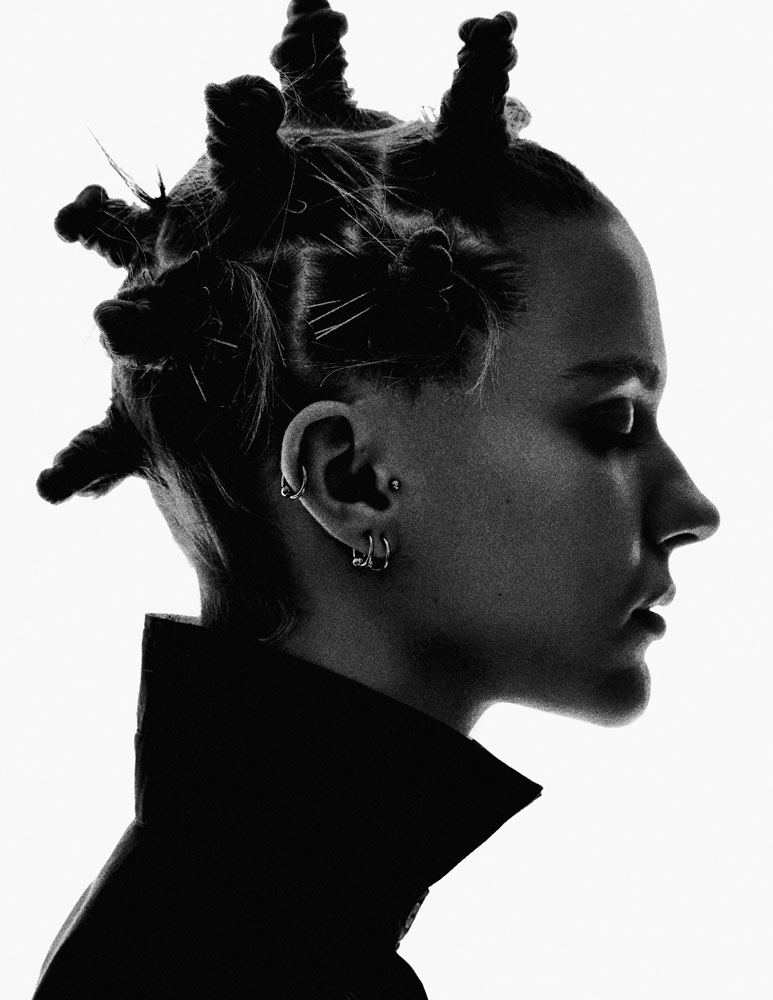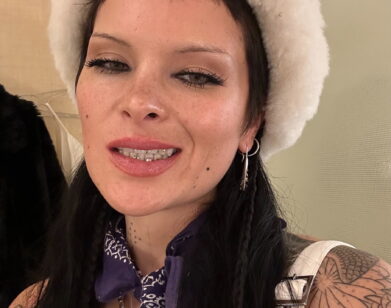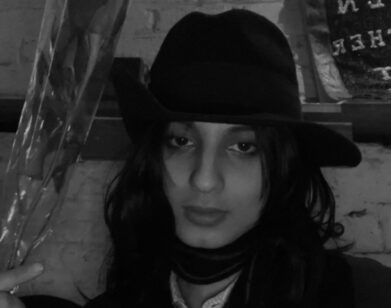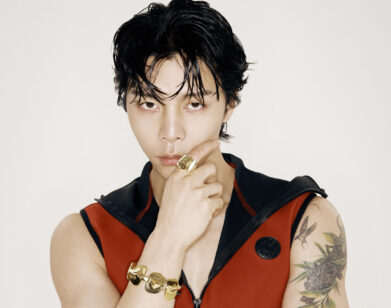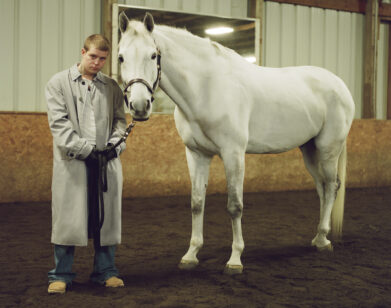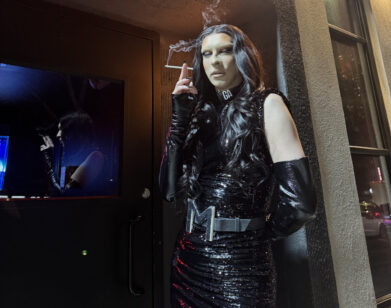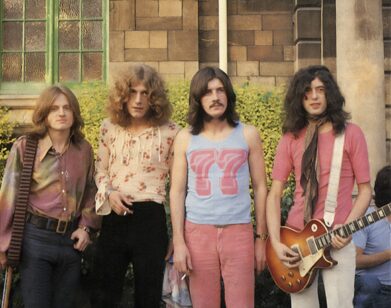Tove Styrke
TOVE STYRKE IN NEW YORK, MAY 2015. PHOTOS: MARKUS ZIEGLER. STYLING: ALPHA VOMERO/SEE MANAGEMENT. HAIR: CHARLIE TAYLOR/HONEY ARTISTS. MAKEUP: BRYAN ZARAGOZA/SEE MANAGEMENT.
At age 16, Tove Styrke finished in third place on Swedish Idol, Sweden’s version of American Idol. As with winners of the American counterpart, she quickly gained a large fan base, although it happened before she had ever even written a proper song. “Doing that sort of thing is a strange way of getting into music, because you’re doing everything in the wrong order,” the singer-songwriter says. “You get a lot of fame, but haven’t created anything musically.”
The musician has since been on a journey to develop her sound and learn the technical side of writing and production. Now, at the age of 22, Styrke is releasing her sophomore album Kiddo this week, which marks a stark departure from her 2010 self-titled debut. In the past five years, she released two EPs, but also left the music industry behind for a year, when she moved home to Umeå, a northern Swedish town, to refocus her music and learn about who she has become as an adult. Her growth and revelations are apparent on Kiddo, as the 12-track album introduces hip-hop and reggae elements, successfully fusing her broad range of musical and film influences in the place of Tove Styrke‘s purely pop appeal. For the artist, Kiddo is a testament to growing up, both musically and personally.
Earlier this year, Stryke embarked on her first-ever North American tour. Between shows in Seattle and Portland, we spoke with the musician over the phone.
EMILY MCDERMOTT: How’s the tour been so far?
TOVE STYRKE: The audience has been so great. For me, it’s really fun because I finally get to see and meet and talk to a lot of people who have been following me on Twitter that I’ve had a sort of cyber-relationship with.
MCDERMOTT: Do you interact with a lot of people on Twitter and then meet them in person? Are they just fans?
STYRKE: I think that social media is a really good way to stay in touch with the people who are following you, and I think it’s nice to have that very direct relationship with them—you don’t necessarily need a middleman or woman. A lot of people, when I meet them, I recognize them by their profile pictures. [laughs] Sometimes they’re not expecting that.
MCDERMOTT: When you play live, how does the music change for you?
STYRKE: The challenge is to translate the song into something that works on the stage. It’s pop music, but I try to keep it as loose as possible. I don’t think it has to sound exactly the same as it does on the recorded version of the song; there’s room for improvisation. Right now we usually have two guitar solos and one insane drum solo. I think it’s very fun to find interesting contrasts—I don’t have that much guitar on the recorded song, but it’s a really fun element to bring out live, because it’s visual as well and contrasts with the electronics.
MCDERMOTT: Your debut came out five years ago and now you are releasing your second album. The first was straight-up pop, but this one has more of a reggae touch to it. Where does that change come from?
STYRKE: It’s a natural progression, really. I took some time away from the music industry. I’ve been doing this since I was 16 and needed some time to get to know myself as a grown-up. I hadn’t known anything else, other than being an artist, and I needed to be a person for a while, really get to know myself without that whole thing [of selling music] surrounding me. So I didn’t take a break from making music, but I took some time away from the “need to sell it” thing, and moved to my hometown, Umeå. I took my time there, exploring music on my own, on a very personal level. I needed to get to know myself and really, really explore music without any pressure to sell it. I wanted to try and not restrain myself at all, so I’ve been trying to move quite freely between different sounds and genres.
Doing that was quite scary. When you strip away everything you’re used to having around you, what’s left is just you, and you’re on your own. I think I really needed that to get in touch with myself and what I actually want. It’s good to have an idea about what you want to do with your life before just doing things. If you have goals and dreams, it doesn’t really matter if you achieve them, but if you have them it’s much easier to not get lost. It’s easier to make decisions.
MCDERMOTT: So what are some of the dreams or goals you set for yourself?
STYRKE: [laughs] That’s kind of private, but I really do know what I want with my life. I think that keeps me from making bad decisions and spending time doing stuff I don’t enjoy.
MCDERMOTT: I’ve read that it was difficult for you to come into your own after having been introduced to music in such a commercial way on Swedish Idol. Can you talk about what you think you took away from that experience, but also the challenges it introduced?
STYRKE: After [the show], people have their eyes on you while you’re taking your first baby steps and trying to make something. That’s tricky. For me, it worked out all right—it really did. I took a lot time to do the first album, and I was really happy about that album. I co-wrote the songs and it was a learning process. When I was working on that album I realized, for the first time, that I could write my own songs. I never felt like I was forced to do anything, but that album sounds a lot different from the new one because it’s all about learning. [At that point, I was] trying to make something that was a good pop album, and I think it is that. But with this new one I had a completely different foundation; I had a mission, I knew what I was capable of, I knew what I wanted to do, and what challenges I wanted to try.
MCDERMOTT: What were some of those challenges and things that you wanted to try?
STYRKE: Writing lyrics from a different place or point of view was something that I really set out to do in this album. I wanted to take my writing to another level. I wanted to write stuff that was personal for real. It’s one thing to write a lyric that sounds nice in that line—that’s not very tricky—but it’s a different thing to write something that sounds nice and actually comes from someplace real, where you actually do mean something of yourself. That was something I really wanted to do.
MCDERMOTT: Did you write the new songs alone or was it co-writing, like on the last album?
STYRKE: I’ve been collaborating a lot, because I like working that way. It’s fun and keeps you moving forward. I think it’s very easy to get self-conscious and stuck when you’re doing everything on your own. In the end, with a song, it wouldn’t have turned out that way if I hadn’t had another person in the studio with me. It’s this thing about bouncing ideas off of somebody else and saying your ideas out loud—you can almost hear, if you say it, if it’s a good or bad idea.
MCDERMOTT: I also read that you are really inspired by a lot of movies, including The Matrix and Kill Bill.
STYRKE: Oh yeah. Kill Bill is one of my favorite movies. It has this gritty feeling to it, and it’s got a little bit of everything—a little bit of western, a little bit of samurai, and a lot of this very cinematic violence that I personally think is very entertaining. Her character is so cool, Beatrix Kiddo. The album is partly named after that character.
It’s been a while since I watched The Matrix, but The Matrix was when I wrote “Borderlines.” I wanted to try and describe the patriarchy. So, like The Matrix, it’s something you can wake up from and realize it is made up and doesn’t need to be this way. I thought that was a fun idea to play with. Also, when I write, I often start with an image in my head—almost like a scene from a movie—and then I imagine what kind of music I want to hear to it; it’s almost like I’m writing a soundtrack to a movie that doesn’t exist.
MCDERMOTT: So is that what you do with your videos? Create those scenes visually?
STYRKE: That’s a lot harder because I’m not a director. A director, Rúnar Ingi, did the “Borderlines” and the “Ego” videos. I think it’s important to find somebody who you trust, who has the same vision. If I were to do that myself, and not trust anybody to do it for me or with me, I would have to spend as much time as I have learning to make music on making music videos.
MCDERMOTT: Going back to your childhood, I know your dad is involved in the music industry, but how did you first become interested in making music and doing it on your own?
STYRKE: I’ve always been singing and making noise. I used to do that all the time when I was a kid. My mom would get very frustrated with me because I would just sit around and make noises. My dad, he has a music store at home, and I remember when I was really young, he brought home a keyboard or synthesizer of some kind. I remember really liking making sounds with it. I never learned to play properly either, I was a little bit too lazy for that, but as long I could express myself in a way that had sound, I was happy.
MCDERMOTT: What was the first piece of music you ever spent money on or downloaded?
STYRKE: I’m a child of the downloading age. I remember when I was 10, a friend who went to the same school as me came to our [school’s] costume party with a really weird hairdo. She had all these little knots in her hair. I asked her who she was and she said she was Björk. I thought this Björk must be a really cool person, so I got on the internet when I got home and found as much as I could on Björk and I fell in love. That was the first music that I really found on my own, that really made me feel something, and that made me understand what music can do to you, in a good way.
MCDERMOTT: Is that what you were channeling at the photo shoot?
STYRKE: That’s really, really funny, because when I got there they were like, “We were thinking ’90s Björk.” I’m like, “How weird is this? This is the coolest thing!” It’s always been my coolest thing—my Björk.
MCDERMOTT: I saw you posted a Björk photo right after you posted Britney Spears on your Instagram, which is funny.
STYRKE: [laughs] I have quite a broad taste in music.
KIDDO IS OUT TOMORROW, JUNE 9, VIA RCA RECORDS AND SONY. FOR MORE ON THE MUSICIAN, VISIT HER WEBSITE.

